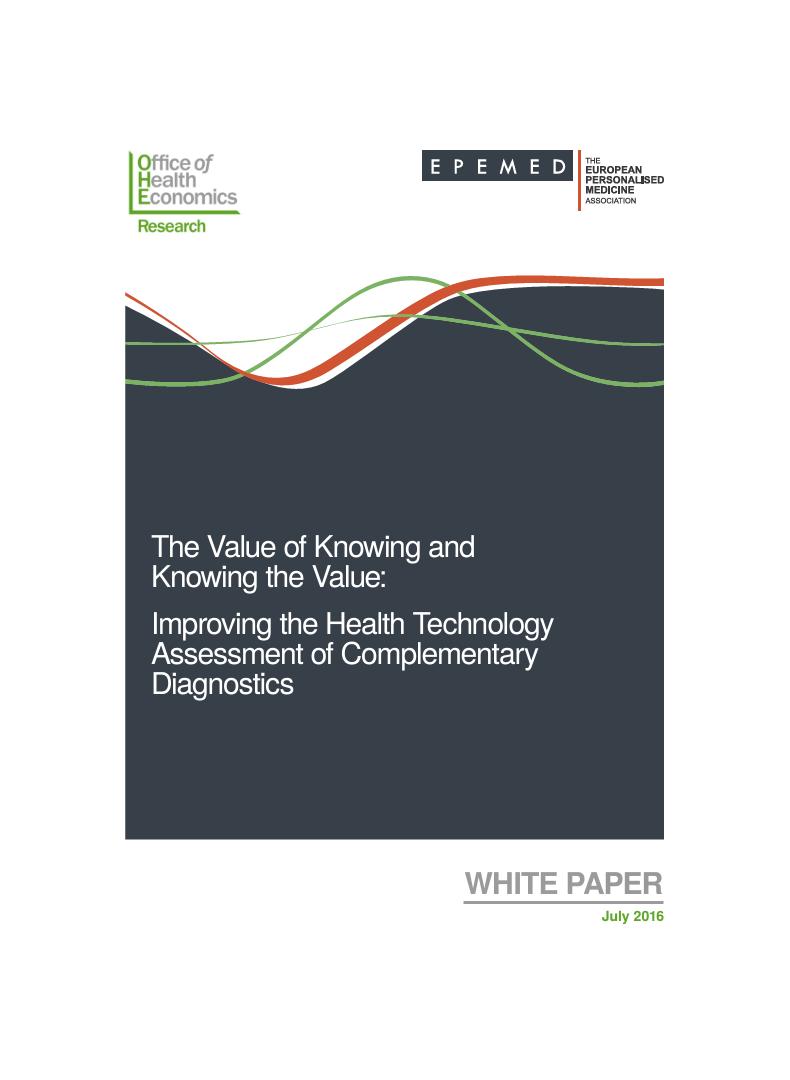Sign up to our newsletter Subscribe
Challenges and Solutions for Budget Impact Analysis of Gene Therapies

Today EPEMED and The Office of Health Economics (OHE) launch their White Paper “The value of knowing and knowing the value: improving health technology assessment of complementary diagnostics”. This work proposes a broader framework for considering the value contribution of complementary diagnostics and provides policy recommendations to support the implementation of this comprehensive framework for assessing their potential value contribution. This is important for improving health sector performance given the lack of attention in current applied health technology assessment (HTA) practices to measuring, among other things, the value of knowing (or the greater certainty of benefit) delivered by diagnostics.
There is a growing recognition that medical diagnostics are used in a wide range of clinically different applications as economic complements to other medical inputs, working synergistically to provide clinical benefit.
Consequently, the study is based on the new concept of “complementary diagnostics”, defining tests using biomarkers for the purposes of risk assessment, diagnosis, prognosis, monitoring, and guiding therapeutic decisions. This broad definition encompasses companion diagnostics and next-generation sequencing (NGS) as subsets of complementary diagnostics. FDA has recently begun to use the term complementary (versus companion) to refer to diagnostics that are not required but provide significant information about use of a drug. EPEMED and OHE believe that their new analysis broadens the use of the term beyond predicting response to specific medicines.
For the Joint OHE/EPEMED press release
The White Paper: The Value of Knowing and Knowing the Value: Improving the Health Technology Assessment of Complementary Diagnostics
Appendix One: Phase I: Complementary Diagnostics: A Literature Review on the Value of Knowing
Appendix Two: Phase II: Landscape Review of Complementary Diagnostics in Europe
For more information, please contact Dr Jorge Mestre-Ferrandiz
The Value of Knowing and Knowing the Value: Improving the Health Technology Assessment of Complementary Diagnostics
